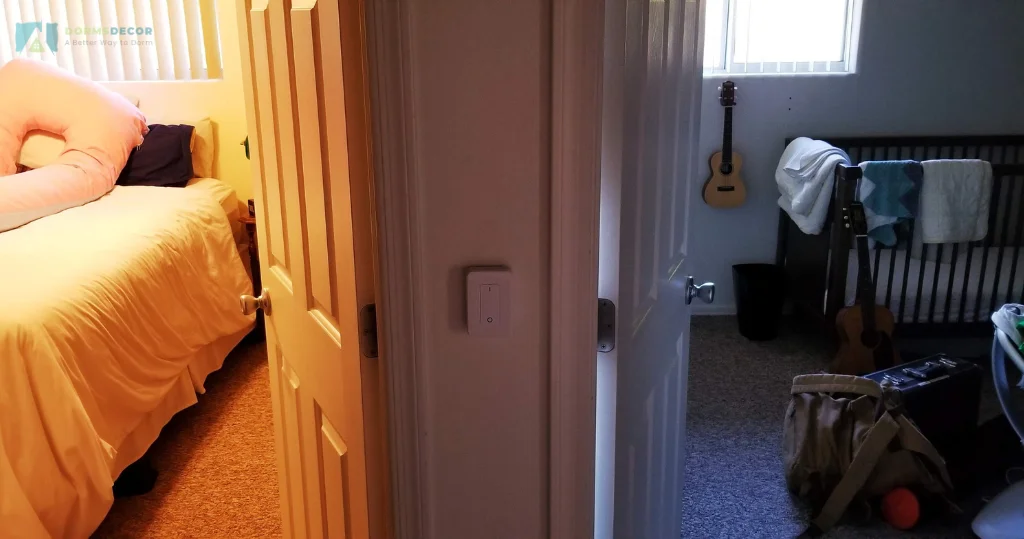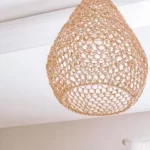The Best Fluffy Pancakes recipe you will fall in love with. Full of tips and tricks to help you make the best pancakes.
Dorm Room Lighting: Natural Vs. Artificial

Are you trying to figure out the best way to light up your dorm room? Whether you prefer natural or artificial lighting, we’ve got you covered with this blog post. We’ll discuss the pros and cons of both types of light sources, so you can make an informed decision about which is right for you.
1. Calculating the Amount of Natural Light in Your Room
To calculate the amount of natural light in your dorm room, it is important to consider the aggregate glazing area. The aggregate glazing area for a Habitable Room should not be less than 8 percent of the floor area of the room. Natural light is essential for improving our aesthetic and providing us with necessary illumination. While natural light is produced by the sun, artificial light sources can include incandescent bulbs, fluorescent tubes and light-emitting diodes (LEDs). The amount of natural light needed is double that of artificial ventilation, so you must take this into account when deciding on a lighting solution for your dorm room. In order to make sure that you have enough natural lighting, there are two methods you can use: a simple daylight calculation based on climate data or a more complex calculation that takes into account both direct and diffuse skylight. Whichever method you choose, it’s important to ensure that your dorm room has enough natural light to keep it bright and inviting.
2. Benefits of Natural Light
Not only does natural daylight boost Vitamin D production and improve mood, it also increases productivity and decreases eyestrain. Studies have shown that exposure to natural light can result in improved student test scores, attendance, and behavior, as well as improved sleep patterns. If you want to bring more natural light into your dorm room, you can use exterior glazing such as windows, skylights, or light pipes to let in more sunlight. Additionally, utilizing mirrors and other design elements can help make your room brighter and larger. Natural lighting is an easy and simple way to boost your mood and energy level, so try to make the most of the natural light available in your dorm room for a more comfortable living space.
3. Artificial Lighting Options
In addition to natural lighting, artificial lighting can also be used in dorm rooms. Artificial lighting solutions can provide a bright and vibrant atmosphere, as well as help with tasks such as studying and reading. Some of the most popular artificial lighting options include incandescents, fluorescents, LED lighting, and BlissRadia lamps. Incandescent bulbs provide a warm and inviting light, while fluorescents provide a more natural-looking white light. LED lights are energy efficient and offer great illumination for studying or reading. BlissRadia lamps are an excellent choice for adding ambiance to darker spaces. When choosing an artificial light source, it is important to consider the size and type of your furniture so that it does not create any clutter or intrusive shadows. Utilizing mirrors can help make your room brighter and larger, while also increasing the effectiveness of your artificial lighting.
4. Consider Your Room’s Furniture When Choosing Lighting Solutions
When choosing the right lighting for your dorm room, it’s important to consider your room’s furniture. The size and shape of the furniture will determine what type of lighting fixtures you should opt for. If, for example, you have a small bed, a bedside lamp might be all you need for adequate lighting. However, if you have a larger bed or an area rug in the middle of your room, you may want to consider installing floor lamps or ceiling fixtures to provide more even light throughout the space. Additionally, if your furniture is dark in color, remember that lighter shades of paint can help reflect more light around your room.
5. Utilizing Mirrors to Make Your Room Brighter and Larger
In addition to utilizing natural and artificial light to make your dorm room brighter, using mirrors is another great way of increasing the brightness of a space. Mirrors can make a room appear larger and brighter by reflecting both natural and artificial light. Strategically placed mirrors can make a small room look larger and brighter, and having a larger mirror above the bar cart can help reflect more light throughout the room. The reflective properties of mirrors can also help amplify the natural light in north-facing spaces, making them appear brighter. With designer-approved tips and tricks on how to use mirrors, you can easily make your dorm room feel larger, brighter, and cozier.
6. Using Natural Lighting Design and Daylighting Fixtures
In addition to utilizing natural light, you can also look into daylighting fixtures or other lighting design techniques that can help bring more natural light into your dorm room. Daylighting fixtures are designed specifically to filter sunlight into your home, and they come in a variety of shapes, sizes, and styles. These fixtures are great for areas that don’t get enough direct sunlight, such as hallways or closets. Not only do they allow you to take advantage of natural light, but they also look great and can add a touch of style to any room. With the right choice of daylighting fixtures, you can turn your dorm room into an oasis of natural light and comfort.
7. Increasing Brightness with String Lights and Neon Accents
To further increase the brightness in your dorm room, consider utilizing string lights and neon accents. String lights can be hung around the windows or walls, and set the mood for a cosy evening in. Neon accents can add a fun and vibrant atmosphere to your room, helping to transform it into a unique and inviting space. With the right lighting fixtures, your dorm room will be transformed into an area that is both welcoming and comfortable.
8. The Benefits of Artificial Light to Boost Mood
Although the benefits of natural light are numerous, there are also advantages to utilizing artificial light in your dorm room. Artificial light can be just as beneficial if manipulated and utilized smartly; it can be of benefit for health and productivity. Bright artificial light that corresponds to the midday spectrum has been proven to boost serotonin production in the brain and improve mood. Additionally, if you find yourself staying up late at night to study or work, artificial lighting can help you stay alert and focused by providing a brighter environment that won’t strain your eyes.
9. Minimizing Artificial Lighting Requirements and Saving Energy
In order to minimize artificial lighting requirements and save energy, it is important to take advantage of natural lighting. By using windows and skylights to bring in natural light, you can reduce your need for artificial lighting and start saving energy right away. Not only will this help you save money on electricity bills, but natural light also has many benefits for your health and wellbeing. Additionally, using motion sensors in stairwells or other areas of the home can lead to a significant reduction in electrical energy consumption. It is also possible to use natural lighting design and daylighting fixtures to make the most of the available sunlight in your room. Finally, utilizing mirrors can help increase brightness and can make your room look larger. When it comes to artificial lighting, it is important to choose the right type of lighting for your needs and ensure that it does not disrupt your natural melatonin cycle. With the right mix of natural and artificial light, you can create a comfortable dorm room that is both aesthetically pleasing and energy efficient.
10. Choosing the Right Lighting to Enhance Productivity and WellBeing
Choosing the right lighting to enhance productivity and wellbeing is essential for any dorm room. Natural light from both the morning and evening has been found to decrease depression and improve mood, energy, alertness and productivity. In addition, balancing natural and artificial lighting is imperative in making any room breathable. Matte walls and surfaces may help reduce reflective glare, while also considering the surface colors in the room when cho



